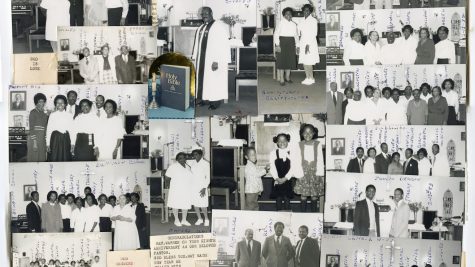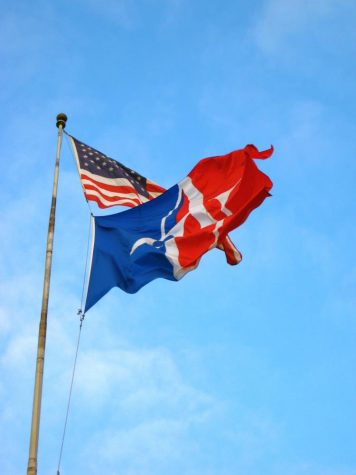Review || Film: "She’s Beautiful When She’s Angry" and the history of the feminist movement
The documentary “She’s Beautiful When She’s Angry” premiered at the E Street Cinema on Feb. 13 and now screening at 82 cinemas across the country. Award-winning documentary producer, Mary Dore, directed the movie. Dore has produced multiple independent historical documentaries which have premiered at international film festivals, as well as dozens of award-winning television documentaries.
The film focuses on the advances of the Women’s Liberation Movement from 1966 to 1971. By marching the streets, protesting Congress, writing feminist literature and resisting the law; activists like Congresswoman Eleanor Holmes Norton, Marilyn Webb, Alice Wolfson, Jo Freeman, Heather Booth and Mary Jean Collins pushed for the ERA (which still hasn’t passed), fought to make rape a more prosecutable crime, addressed domestic violence, and created the idea that the “the personal is political.”
The film opens with the line, “A majority of states are restricting access to women’s reproductive health care.” It immediately delves into the recent anti-abortion laws to emphasize the fact that despite the gains in women’s freedoms, there is still a lot left to do.
The film covers the women’s movement through its progression, starting from its roots in the Civil Rights Movement.
“The Civil Rights Movement was the mother of all the 60s movements,” activist Jo Freeman said. “I was in the Civil Rights Movement for four years. I took what I learned from that movement and applied it for women.”
Women began to join together at a time when the fight for women’s rights was long overdue: a major theme of the documentary. In the 1960s, society discriminated against women in the workforce, and were expected to be nurturing, emotional and mother-like (some would argue this perception still exists today). There was no concept of reproductive justice or rape as a political crime, and society did not afford women the fulfillment of their emotional and physical needs. Women struggled to end their oppression not by working within the system, as others had done before them, but by trying to change it.
“We didn’t want a piece of the pie. We wanted to change the pie,” reproductive rights activist Alice Wolfson said. “We were talking about changing the whole paradigm of how men and women interact.”
Through their efforts, the women’s movement gained legal abortions, an FDA warning on birth control, access for men into the delivery room, an increase of women in medical school, and a greater knowledge of women’s bodies. Today, more women go into the STEM fields than ever before and the feminist movement has received increasing popularity. There is a larger diversity of women’s voices in the media and in office with the first black Republican woman and the first openly bisexual woman recently elected to Congress. Yet women still face inequality in the workforce and the STEM fields, still have their rights infringed upon through constant anti-abortion laws, and only make 77 cents for every dollar men make.
The documentary highlights these accomplishments alongside the inequity and danger women faced, infusing humor while maintaining the gravity of the issues. Although the Women’s Liberation movement mainly emphasized white, heterosexual voices, “She’s Beautiful When She’s Angry” surprisingly, and accurately, includes a multitude of perspectives. The documentary directly addresses the homophobia, racism, competition, and controversy of the movement.
After being ostracized because of the overwhelming majority of white women in women’s groups, as well as the sexism found in the black community, black women formed their own separate groups to be heard. Many of these women did not receive basic human rights because they were oppressed because of their gender and their race.
The feminist movement today is still represented by white, middle-class women. Women of color who want to take a more intersectional approach are excluded and often rendered invisible in the media. Therefore, due to the association of feminism with white women, many women of color identify as “womanists,” to emphasize their fight to end all forms of oppression for all people.
“It was very difficult for white middle class women to have any conception of black women’s lives,” Fran Beal, leader of SNCC Black Women’s Liberation Committee, said. The committee, which later became the Third World Women’s Alliance, took a more intersectional approach that incorporated race, class, and gender into their perspective.
The queer community also felt excluded from the women’s movement, as Betty Friedan and others were concerned that lesbian issues would disrupt its increasing progress and acceptance.
The movie further did not shy away from the movement’s misgivings and destructive actions, articulating the fact that many women demanded that wives should leave their husbands, as well as the unfriendly competition in the movement. The Women’s Liberation Movement is understood, yet despite this, the panel composed of the director and activists, said the movement had great success.
“Based upon that forty or fifty years of studying a wide view of social movements, I’m prepared to say that the Women’s Liberation Movement was one of the most successful social movements this country has seen,” Freeman said. “Which doesn’t mean we don’t still have a lot left to do. I challenge the younger generation to get out and do it.”
The activists who attended the screening were united in their belief that their fight was only the beginning and realized the next generation has a great ability to evoke change.
“The struggle absolutely goes on,” Heather Booth, co-founder of the Chicago Women’s Liberation Union, said. “All of the struggles are unified in that when we organize, we can change the world and we absolutely need to.”

Senior studying journalism and women, gender, and sexuality studies. Went kayaking with seals in Vancouver this summer and traveled to 12 countries while...











